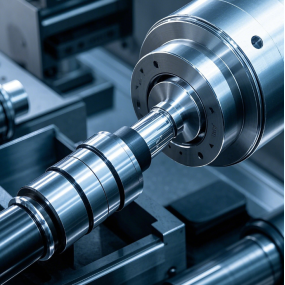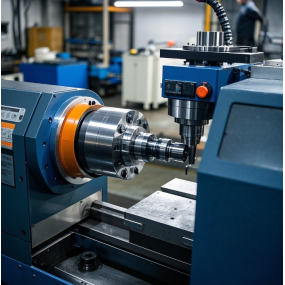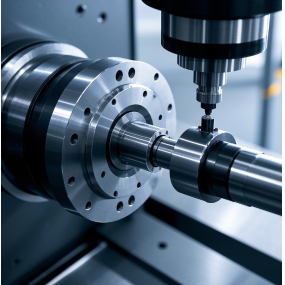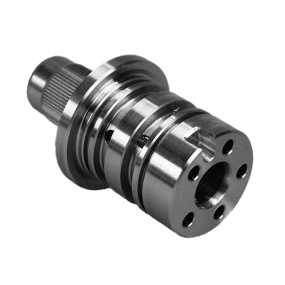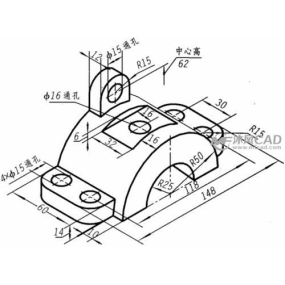In the process of chassis machining, reducing the opening and gap of the shell is an important step to improve the overall performance and aesthetics of the chassis. The following are some specific measures and suggestions:  I. Optimization in the design stage to minimize the opening requirements: In the design stage, the necessity of each opening should be carefully evaluated, and unnecessary openings should be reduced as much as possible through internal layout optimization. For example, through a reasonable cable routing design, the need for external interfaces can be reduced. Optimization of opening size and position: For the necessary openings, their size and position should be accurately calculated and optimized to ensure that the functional requirements are met while minimizing the impact on the shielding performance of the chassis. The size of the opening should be less than 1/20 of the wavelength corresponding to the highest interference frequency in the zui to avoid electromagnetic wave leakage. Adopt integrated design: The chassis processing uses components and modules with high integration degree as much as possible to reduce the number of components that need to be installed and wired separately, thereby reducing the opening and gap. Second, the control of the processing and manufacturing process High-precision processing: The high-precision processing equipment and technology are adopted to ensure the processing accuracy and surface quality of the chassis shell. High-precision processing can reduce the gap and mismatch problems caused by processing errors. Reasonable seam design: The chassis processing adopts reasonable design at the seam, such as folding, configuring EMI shrapnel or EMI touchpoint, etc., to increase the tightness and shielding performance of the seam. At the same time, ensure the smoothness and cleanliness of the seams, and avoid the gaps caused by unevenness or impurities. Use electromagnetic sealing gasket: Install electromagnetic sealing gasket at the seams and openings to fill the gaps and eliminate the conductive discontinuity points. Electromagnetic sealing gasket is an elastic material with conductive surface, which can significantly improve the shielding performance of the chassis. III. Post-processing and testing Strict quality inspection: After the chassis is processed, a comprehensive quality inspection is carried out on the chassis shell, including the sealing of openings and gaps, the stability of the overall structure, etc. Through quality inspection, existing problems can be found and repaired in time. Reasonable installation and debugging: During the installation and debugging of the chassis, pay attention to avoid unnecessary damage and openings to the shell. At the same time, ensure that all components and modules are installed and connected correctly according to the design requirements. IV. Other Suggestions to Choose Suitable Materials: The chassis shell should be made of materials with good shielding properties and mechanical strength, such as aluminum-magnesium alloy, etc. These materials can not only effectively block the leakage of electromagnetic waves, but also be able to withstand certain shocks and vibrations. Strengthen Personnel Training: Conduct professional training for chassis processing, manufacturing and installation and commissioning personnel to improve their professional skills and quality awareness. Through training, it can be ensured that they operate in strict accordance with process requirements and reduce quality problems caused by human factors.
I. Optimization in the design stage to minimize the opening requirements: In the design stage, the necessity of each opening should be carefully evaluated, and unnecessary openings should be reduced as much as possible through internal layout optimization. For example, through a reasonable cable routing design, the need for external interfaces can be reduced. Optimization of opening size and position: For the necessary openings, their size and position should be accurately calculated and optimized to ensure that the functional requirements are met while minimizing the impact on the shielding performance of the chassis. The size of the opening should be less than 1/20 of the wavelength corresponding to the highest interference frequency in the zui to avoid electromagnetic wave leakage. Adopt integrated design: The chassis processing uses components and modules with high integration degree as much as possible to reduce the number of components that need to be installed and wired separately, thereby reducing the opening and gap. Second, the control of the processing and manufacturing process High-precision processing: The high-precision processing equipment and technology are adopted to ensure the processing accuracy and surface quality of the chassis shell. High-precision processing can reduce the gap and mismatch problems caused by processing errors. Reasonable seam design: The chassis processing adopts reasonable design at the seam, such as folding, configuring EMI shrapnel or EMI touchpoint, etc., to increase the tightness and shielding performance of the seam. At the same time, ensure the smoothness and cleanliness of the seams, and avoid the gaps caused by unevenness or impurities. Use electromagnetic sealing gasket: Install electromagnetic sealing gasket at the seams and openings to fill the gaps and eliminate the conductive discontinuity points. Electromagnetic sealing gasket is an elastic material with conductive surface, which can significantly improve the shielding performance of the chassis. III. Post-processing and testing Strict quality inspection: After the chassis is processed, a comprehensive quality inspection is carried out on the chassis shell, including the sealing of openings and gaps, the stability of the overall structure, etc. Through quality inspection, existing problems can be found and repaired in time. Reasonable installation and debugging: During the installation and debugging of the chassis, pay attention to avoid unnecessary damage and openings to the shell. At the same time, ensure that all components and modules are installed and connected correctly according to the design requirements. IV. Other Suggestions to Choose Suitable Materials: The chassis shell should be made of materials with good shielding properties and mechanical strength, such as aluminum-magnesium alloy, etc. These materials can not only effectively block the leakage of electromagnetic waves, but also be able to withstand certain shocks and vibrations. Strengthen Personnel Training: Conduct professional training for chassis processing, manufacturing and installation and commissioning personnel to improve their professional skills and quality awareness. Through training, it can be ensured that they operate in strict accordance with process requirements and reduce quality problems caused by human factors.
Hello! Welcome to EMAR's website!
 English
English » »
» »
 Spanish
Spanish Arabic
Arabic Spanish Basque
Spanish Basque Portuguese
Portuguese Belarusian
Belarusian Japanese
Japanese Russian
Russian Icelandic
Icelandic Bulgarian
Bulgarian Azerbaijani
Azerbaijani Estonian
Estonian Irish
Irish Polish
Polish Persian
Persian Boolean
Boolean Danish
Danish German
German French
French Filipino
Filipino Finnish
Finnish Korean
Korean Dutch
Dutch Galician
Galician Catalan
Catalan Czech
Czech Croatian
Croatian Latin
Latin Latvian
Latvian Romanian
Romanian Maltese
Maltese Malay
Malay Macedonian
Macedonian Norwegian
Norwegian Swedish
Swedish Serbian
Serbian Slovak
Slovak Slovenian
Slovenian Swahili
Swahili Thai
Thai Turkish
Turkish Welsh
Welsh Urdu
Urdu Ukrainian
Ukrainian Greek
Greek Hungarian
Hungarian Italian
Italian Yiddish
Yiddish Indonesian
Indonesian Vietnamese
Vietnamese 简体中文
简体中文 Haitian Creole
Haitian Creole


